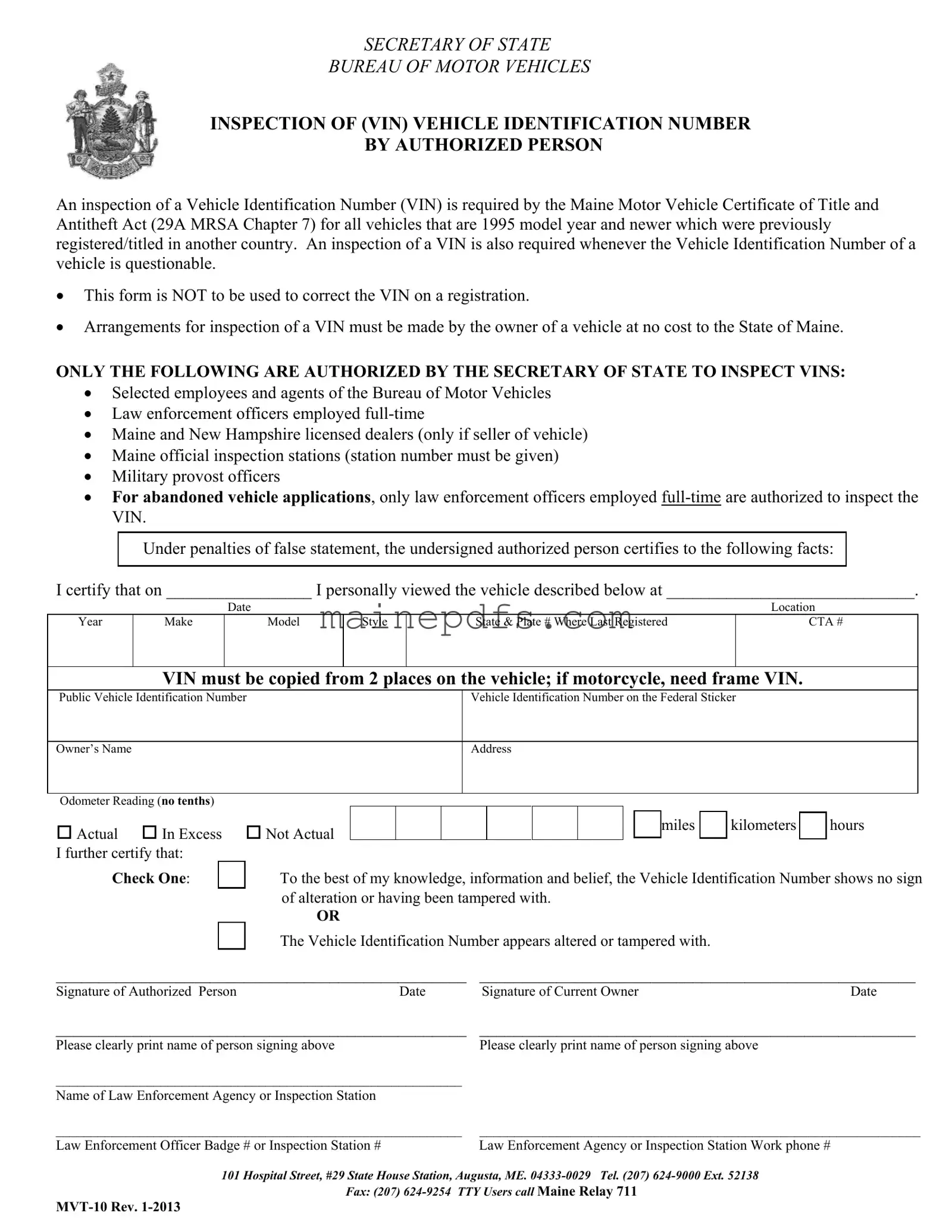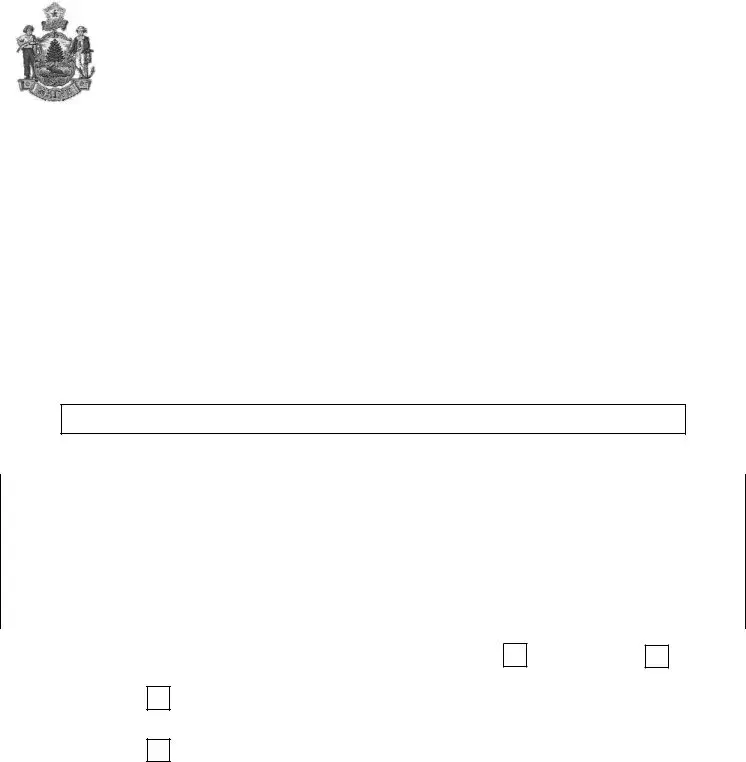The Maine MVT-10 form, used for the inspection of Vehicle Identification Numbers (VINs), shares similarities to other state-specific vehicle inspection documents across the United States. One such example is the Texas Vehicle Inspection Report (VIR), required for vehicle registration or renewal. Like the MVT-10, the VIR ensures that vehicles meet a specific state's safety, emissions, and anti-theft regulations by verifying vital information, including the VIN. Both forms are integral to maintaining the safety and legality of vehicle ownership and operation within their respective states.
Another document akin to the Maine MVT-10 form is the California Vehicle Verification form. This form is used by authorized personnel to verify a vehicle's VIN when registering a vehicle from out of state or when the VIN is in question, similar to the circumstances outlined for the MVT-10. The California form, like Maine's, aims to prevent the illegal sale, use, or importation of vehicles by ensuring the VIN's authenticity and accuracy.
The Florida Vehicle Identification Number and Odometer Verification form also shares a purpose with Maine's MVT-10. It requires inspection and verification of the VIN and odometer reading for vehicles being registered in Florida, especially those coming from another state or country, ensuring the vehicle’s history and condition are accurately represented. Both forms serve as crucial tools in the fight against vehicle fraud and theft.
In New York, the Vehicle Identification Number Inspection form plays a role similar to that of the Maine MVT-10, focusing on verifying the vehicle's VIN, especially in cases where ownership is transferred or when the vehicle is from out of state. By confirming that the VIN matches the vehicle's documentation, New York and Maine both uphold the integrity of their motor vehicle registration processes.
The Illinois VSD-190 form, used for vehicle title and registration, requires a VIN inspection similar to the MVT-10's process. The Illinois approach ensures that all vehicles, particularly those entering from another state or country, have their VINs thoroughly inspected and documented to prevent theft and fraud. It emphasizes the nationwide importance of VIN verification in maintaining a legal and transparent vehicle registration system.
The Nevada VIN Inspection Certificate (VP 015) is another form with a purpose that mirrors that of Maine's MVT-10. It is essential for those registering an out-of-state vehicle in Nevada, with the goal of confirming the vehicle's identity and preventing the registration of stolen or tampered vehicles. Both Nevada’s and Maine’s forms are vital components of their state’s efforts to ensure the safety and legality of vehicles on their roads.
Analogous to Maine's MVT-10, the Arizona Vehicle Identification Number Inspection form (used within multiple procedural contexts) is crucial for verifying the authenticity of a vehicle's VIN, especially upon first-time registration or title transfer in Arizona. Like the aforementioned documents, the Arizona form safeguards against vehicle identity theft and fraud, underscoring the common goal of accurate vehicle identification and registration across different states.

